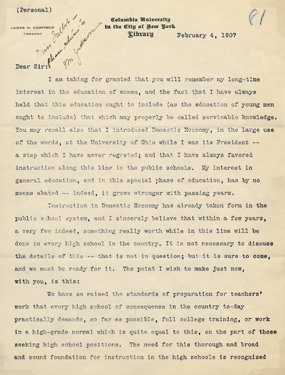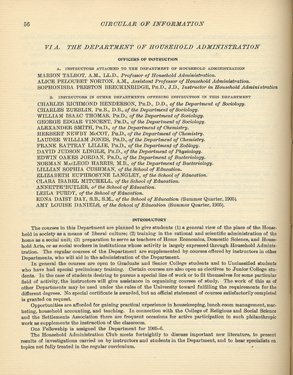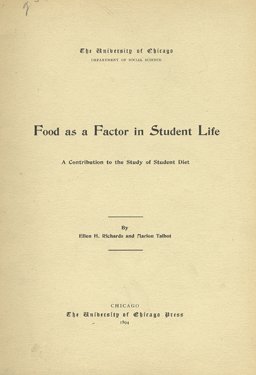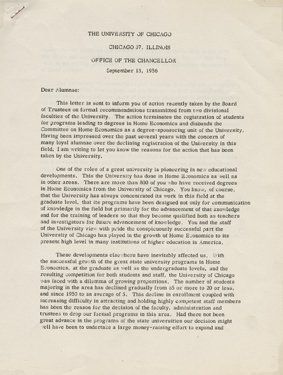The Household as Subject of Academic Study
By the turn of the nineteenth century, the domestic sphere, and activities within it, found its way into the academic curriculum, both in secondary schools and in colleges. The domestic had become a subject of its own, with courses aimed at educating young women of varying classes and prospects.
The University of Chicago's records provide some insight into how the subject was taught, both at the secondary and at the university level, as one of the leading scholars in the field, Marion Talbot, joined the University faculty in 1892. Talbot both studied subjects such as the effect of diet on women students and advocated for high school girls to be taught about subjects such as marketing and budgeting, as well as gain hands-on experience preparing a variety of dishes. The change in departmental names during her time at the University indicates the shifting approaches to the subject matter; when Talbot was an assistant professor, she worked in the Department of Sanitary Science. By the time she was tenured, her department was Household Administration.
Women college students could take courses in Household Administration at the University of Chicago, which offered both practical kitchen experience as well as the opportunity to study the home from a more critical point of view. Graduate theses were written on topics ranging from an analysis of the amount of math included in home economics courses, to surveys on the most desirable qualities and skills to be inculcated in high school girls through home economics classes.
The department changed names again, becoming Home Economics, when Professor Margaret Reid, published work documenting the economic contributions of women's unpaid labor within the home. She taught at the University of Chicago from 1951-1961 as professor of Home Economics and Economics, moving to the latter department after the demise of Home Economics as its own department.
At the University of Chicago, as at many other institutions of higher education, Home Economics and its variants did not last long beyond the end of World War II. With more career options opening to women, and fewer opting to major in Home Economics as a course of study, the departments had shrinking enrollments. At the University of Chicago, the department formally dissolved in 1956, as seen in the document shown here.




